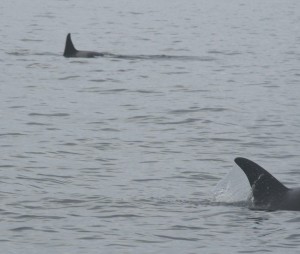Ignorance is Misery
While there is a lot of information that we do know about the southern resident killer whales, there is so much information that still remains a mystery about these great predators. It has been established that the southern resident killer whales mainly eat Chinook salmon, which makes up 65% of their diet. Research has also shown that Chinook salmon within the home range of the southern resident killer whales are also endangered (Hanson, 2007). In addition to knowing their diet; their family structure, life span, age of sexual maturity, and vocalizations used by these predators are known as well. With all of the knowledge we do have about the southern resident killer whales, there are a lot of things that we can only speculate about. One thing that remains unclear is what the vocalizations of these whales mean.While on the Gato Verde I focused on one specific question, which was – can killer whale click rates tell us anything about foraging behavior? Researchers have found in several species of toothed whales that there is a relationship between acoustics and foraging behaviors (Simon, 2007). Because so much of a killer whales activities take place under water where visability s limited, this question was particularly hard to answer.
I was unable to find a direct correlation between foraging and click rates from the data I collected, however I am still interested in further exploring this question. Further research on this topic would perhaps give me a more definitive answer, and it would be useful in determining what activities are taking place in their underwater habitat. While the answers I found through my own project were not entirely satisfactory, this project did heighten my curiosities about what the clicks produced by killer whales could be telling us. I would recommend that others explore this topic as well, so that one day we will have a definite answer to what their vocalizations mean.




 Twitter
Twitter LinkedIn
LinkedIn Facebook
Facebook